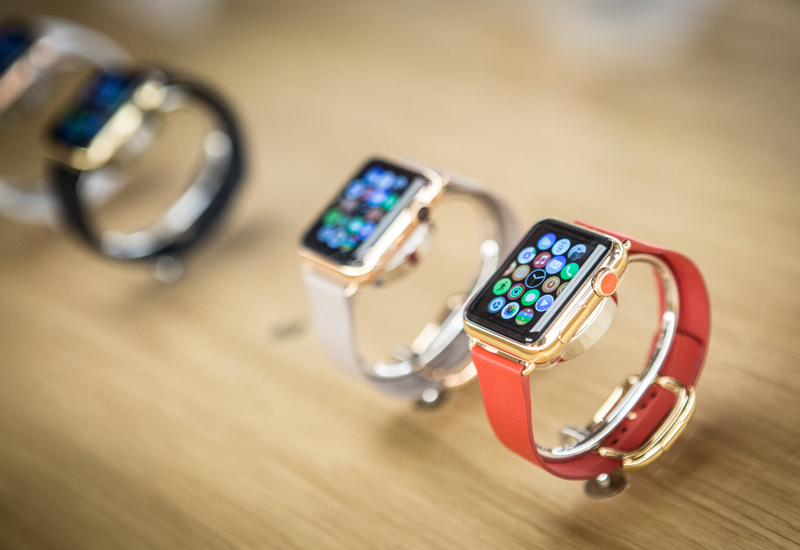The worldwide smart watch market will see only modest growth in 2016 before expanding to 50 million units in 2020, according to the International Data Corporation (IDC).
New smartwatch shipments are expected to grow only slightly for the rest of 2016 because of late-in-the-year and iterative product releases. According to a new forecast from the IDC Worldwide Quarterly Wearable Device Tracker, total smartwatch shipments will reach 20.1 million units in 2016, an increase of 3.9% from the 19.4 million units shipped in 2015.
IDC categorises smart watches as those that can run third party applications. Examples include Apple’s Watch, Samsung’s Gear S3, Motorola’s Moto 360, and Pebble’s Watch. Smart watches are part of IDC’s larger category of Smart Wearable devices, which also include smart glasses and certain wristbands. IDC expects total smart wearable volumes to reach 21.5 million units shipped in 2016. By volume, smart watches account for the largest part of the category, and are expected to reach a total value of $17.8 billion (£13.5bn) in 2020.
Meanwhile, IDC categorizes wearables that do not run third party applications as basic wearable devices. Basic wearables can take on multiple form factors – wristbands, clothing, and watches – but underpinning all of them is that none of them run third party apps. Examples include Fitbit’s selection of fitness trackers, Garmin’s Vivofit devices, and Xiami’s MiBand. By the end of 2016, total shipments of basic wearables will reach 80.7 million units.
Ramon Llamas, research manager for IDC’s Wearables team said: “To date, smart watches have remained in the realm of brand loyalists and tech cognoscenti, but we expect that to change over the next few years. First, smart watches will look and feel like traditional watches, appealing to those who put a premium and design and style.
“Second, once the smart watches get cellular connectivity, they’ll disconnect from the smartphone, making them more useful. Third, smartwatch applications will build on this cellular connection, and connect with other devices within the home and at work. Finally, smartwatch prices will come down, making them more affordable to a broader market.”
Ryan Reith, program vice president for IDC’s Mobile Device Trackers, said: “It is increasingly becoming more obvious that consumers are not willing to deal with technical pain points that have to date been associated with many wearable devices.
“Complaints about battery life, smartphone dependency, and minimal use cases have been well versed across most publications and research findings. The aforementioned improvements that are rapidly being deployed by most vendors should improve this aspect, but at the same time the increase in devices that have more fashion appeal over technological appeal should also be a catalyst to growth in both smart watches and basic watches with minimal functionality beyond normal analog.”
| Worldwide Wearables Market, Shipments by Product Category, 2016 and 2020 (Units in Millions) | |||||
| Product Category | 2016 Shipment Volumes* | 2016 Market Share* | 2020 Shipment Volumes* | 2020 Market Share* | 5-year CAGR |
| Basic Wearables | 80.7 | 78.9% | 147.8 | 65.9% | 20.2% |
| Smart Wearables | 21.5 | 21.1% | 76.6 | 34.1% | 30.6% |
| Total | 102.2 | 100.0% | 224.4 | 100.0% | 23.2% |
| Source: IDC Worldwide Quarterly Wearable Device Tracker, September 15, 2016 | |||||

